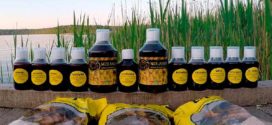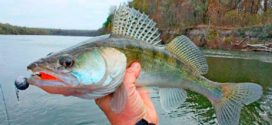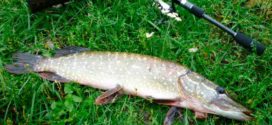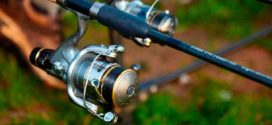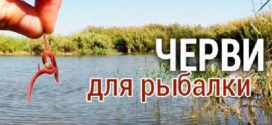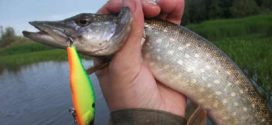There are several factors that affect the amount of catch. Good fishing depends on the quality of tackle, choice of location and weather conditions. The latter is often referred to as atmospheric pressure. Therefore, before the trip, experienced "getters" carefully monitor household barometers.
What pressure is best for fishing - normal, low or high? For analysis, it is necessary to study the influence of this factor on the behavior of fish.
Content
Signs of increased and decreased atmospheric index
The normal value of pressure is 750 mmHg. It characterizes the degree of density of air masses in certain areas of the earth. The value changes under the influence of a number of factors: temperature, wind, movement of the moon. Often, a normal indicator of atmospheric pressure is fixed at home, but fishing, subject to other conditions, does not bring the expected catch.
There are several signs of low or high atmospheric pressure. They will allow you to determine the approximate value without a barometer:
- Low. The smoke from the fire spreads along the ground, there is a slight dispersion. Also, in some cases, foam may form on the shore of the reservoir.
- High. Often characterized by clear and calm weather. The air temperature is stable.
How pressure affects fishing
Weather conditions affect the change in fish behavior. The temperature of water, air and many other factors matter. As for atmospheric pressure, the fishermen developed their own “theory” and revealed the dependence of this parameter on the degree of activity of certain fish species.
What kind of catch can be expected at certain indicators of the mercury column?
- Low. The upper layers of the water have a lower oxygen content, so the fish sink to a depth. At this time, predatory fish species are activated: pike, ruff, crucian carp, carp. The hook should be at the maximum depth, you can use live bait or bait as bait.
- High. The situation is changing to a diametrically opposite one. There is a lot of movement in the upper layers of the reservoir, fishing can be done with traditional baits - worms, bread, etc. Under such conditions, you can catch ide, bream, carp or roach.
Additionally, the degree of water transparency must be taken into account. Predators traditionally hunt in muddy layers.
about which line is better to choose for a float rod.
Optimal pressure for winter and summer fishing
All of the above conditions apply for summer fishing planning. The behavior of fish is influenced by many factors: pressure, air temperature, the degree of saturation of water layers with oxygen. Therefore, when choosing gear, fluctuations in atmospheric pressure can and should be taken into account, but not to the same extent as for winter fishing.
With minimal illumination and an influx of oxygen into the water, the degree of fish activity largely depends on the atmospheric pressure indicator. In winter, you need to pay attention to the following factors:
- pressure stability. It should not deviate from the norm within 10% within 2-3 days.
- A low or high value does not affect the catch. It is important that the above stability condition be satisfied.
- The hole is a natural source of oxygen to the water and can change the pressure in the local part of the reservoir.
Additional factors affecting fishing
But not only atmospheric pressure affects fishing. Other factors must be taken into account. These include the lunar phase, time of day and year. Most of the fish prefer to live in the warm layers of the reservoir. Its behavior is influenced by the degree of fluctuation of water masses - waves.
Additional factors, knowledge of which will help increase the catch:
- Wind. It can cool or warm the upper layers of the reservoir, enrich them with oxygen, thereby provoking the fish to rise to the top.
- Rain. Biting at this time is better, but most of the fish goes to the depth. If rain accompanies a thunderstorm, this is a clear sign of a bad catch.
- Temperature change.
The latter indicator is not relevant for winter fishing, since potential prey is in "greenhouse conditions". Changes in habitat parameters in winter are rare.
Hello, I am Alexander, the mastermind behind the blog.
In terms of career and free time, I connected my life with the forest. How else, when you live in Karelia! In this blog, I am responsible for the hunting, hiking and equipment sections. Welcome to my world!
 Survival Lessons Tips for the survivalist, fisherman and hunter
Survival Lessons Tips for the survivalist, fisherman and hunter
